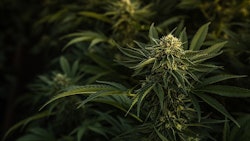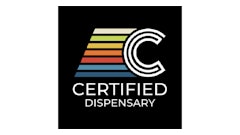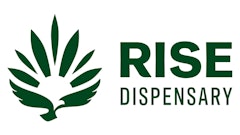

The terms cannabinoids, terpenoids and flavonoids may not have the same market appeal as indica or sativa. But many industry experts say these secondary metabolites hold more value to cultivators and their customers than common strain names.
In the September issue of sister publication Cannabis Business Times, senior editor Brian MacIver explored some industry myths and how science is changing the way cultivators make strategic decisions (see the September 2019 cover story “The Science Void”). It’s a topic that Cannabis Dispensary also explored during the 2019 Cannabis Conference.
Andrea Sparr-Jaswa, now science editor at CBT and CD, addressed some of these key issues as the moderator for a panel on “Science That Sells: Debunking the Sativa and Indica Myths and Instead Focusing on Terpenoids, Cannabinoids and Flavonoids” at the 2019 event, which featured Jeremy Plumb, director of production science for Prf Cultivar; Jeremy Sackett, founder and chief science officer of Cascadia Labs; and Dr. Dominick Monaco, general manager at GB Sciences Inc.
Here are some highlights from the panel discussion and a glimpse at what’s to come for Cannabis Conference 2020 taking place at Paris Las Vegas April 21-23, 2020. (Note: the following has been edited for length and clarity.)
On the Indica vs. Sativa Myth
Plumb: We’ve worked for a long time to try to be more relevant at both Farma and now at my role at Prüf Cultivar, to try to … expose the ingredients. But the big issue is this: There’s morphology—like the plant structure. And when we look at narrow and broad leaves, from a plant morphology perspective, we can’t easily correlate that with the kinds of chemistry the plant produces. Really, this morphology was the basis for the original taxonomy.
And it’s gone through many waves. But the reality is, we’re in a new era where we have really distinctive features for phytochemistry on one side of the equation and then distinctive features for the morphological development of the plant on the other. But the giant issue happens when we try to connect the two. And really, [we] can never say that the narrow-leafed sativa plant is producing these focusing and euphoriant effects. That’s really going to come down to the molecules and the inventory and the chemistry in that plant.
Sackett: We’ll never find this perfect archetype of (indica/sativa) in the commercial market now. There’s a third category that’s often used, which is “hybrid.” The problem is … they’re all hybrids. These categories that have become popularized … are a bit unfortunate. You see … we have this moment in history to really change people’s lives with the inventory of phytochemistry, [and] we’re seeing really unfortunate labeling of the ingredients or misrepresentations altogether.
Sparr-Jaswa: Yeah, hybridization in the market and just this constant evolution of perpetuating new genetics—which is incredibly exciting—has completely rendered the [indica/sativa] dichotomy meaningless.
On Data Transparency and Targeted Effects
Monaco: If we don’t actually start collecting that [phytochemical] data, we don’t know if it’s actually having effects on therapeutic value for our patients or our customers. There could be a phytol, a sterol, an ester in there that’s causing all of these actual great therapeutic effects. Metabolomics [the study of metabolites’ effects on cells] is definitely where we’re going to find out exactly where the plant and body meet. We always talk about seed-to-sale, right? But we need to talk about seed-to-outcomes … because that’s where we’re going to get all of this actual data … where we’re going to push this forward.
Sackett: And, you know, that outcome at this juncture, as you mentioned, is really patient-based and empowering the patient or adult consumer to really understand what they are consuming. It just takes a little bit of motivation on the retail end. And then, hopefully, empowering the consumer to start tracking their outcome based on these sets of terpene and cannabinoid information that they now have.
Plumb: [Data allows us to] really meet people’s needs and take care of them in a more targeted way. … It always comes back on us to actually report and collect that data in a wholehearted way—to make sure it’s transparent and make sure that it’s not adulterated in any way, and that it’s analyzed correctly. Because, you know, if we start correlating things that aren’t correlatable, then we’re back to square one.
Metabolomics is definitely where we’re going to find out exactly where the plant and body meet. Dr. Dominick Monaco, general manager, GB Sciences Inc.
On Navigating Environmental Effects on Phytochemistry
Plumb: The reality is, if you are a producer as I am, you would see an unbelievable range of phytochemistry from one plant as a result of small changes in the environment. So, the kinds of things that contribute to affecting the secondary metabolite profile of drugs the plant is making include: temperature, relative humidity, light intensity, light wavelength, frequency of irrigation, nutrition programs, harvest timing—all sorts of things beyond the genetic material itself.
… So, for people who advocate sun-growing—which I am a huge fan of—we need to absolutely ecologically produce cannabis as … our carbon footprint scales. … But, on the other hand, we really need targeted effects and plants that can produce consistent arrays of phytochemistry in order to meet diverse people’s needs. So, there’s a really important role to play in controlled environment agriculture—in precision agriculture.
Monaco: You know, having cultivated 1.5 million grams every year out of our local Las Vegas facility, I can attest to the fact that it’s very difficult to get batches to be the same. We’ve noticed variance from room to room, time of year. … And having that laboratory data to come and back-end your actual production data to say, “OK, so my VPD went off here or my light shut off here or my CO2 went off and I had to switch out a tank for that day.” ... Knowing those kinds of things and then correlating it with the actual laboratory data is absolutely key if you want to fine-tune your operation.
On Nomenclature and Setting Consumer Expectations
Sackett: And speaking to the standardization of testing labs … there are many national organizations working to set those standards. … The general quality practices of any laboratory are consistent to a food laboratory, a pharmaceutical laboratory. But I’ve sat in rooms where [strain] names were changed just because the marketing team thought it would sell better under this name. I think ... what is in that name is really those phytochemicals. Using that profile to navigate both consumer choices as well as those breeding and cultivation choices is super important.
Plumb: We’re still at a moment where there is an incredible amount of genetic diversity. … And we have an opportunity to actually do an honest inventory and start to represent the products more accurately to consumers. So clearly diminishing the relevance of the strain name is a fundamental part of that and really moving forward the chemovar … is really the most important thing I see happening in terms of being more relevant to a mass market.
Sackett: Moving a product forward with those different claims of experience is a little bit early in my opinion. …And, ultimately, a dream that I have is that somebody can walk into a retail shop and be drawn to a terpinolene-dominant section, a caryophyllene-dominant section, a pinene-dominant section and have those grouped together and be able to make better choices.
So, I really think that we’re at a place where it’s just going to take a while, and we have to be humble and use great science and collaborate and be mature as an industry. And recognize what we don’t know and where we have to go to be able to serve the most people at the deepest level.


























